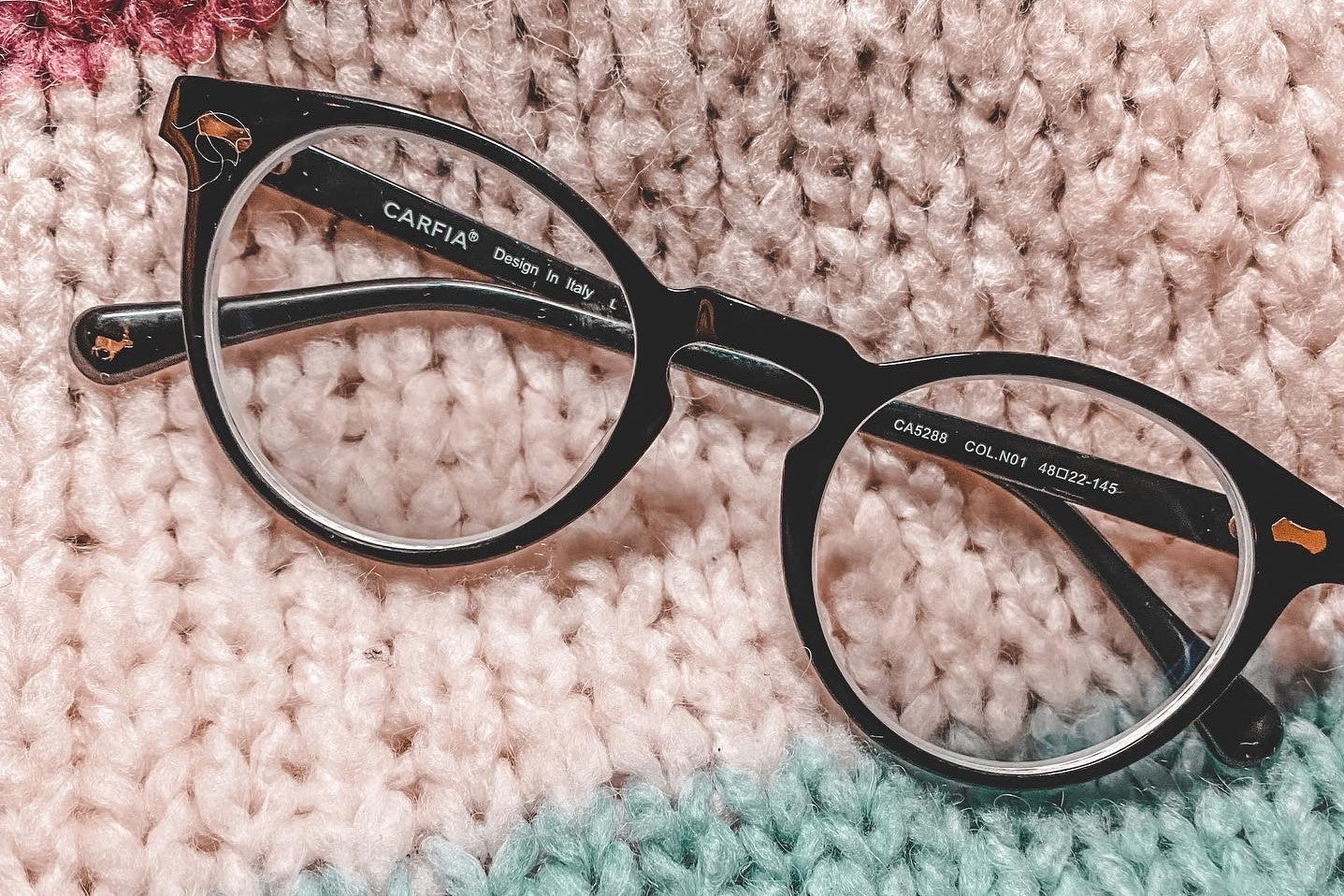Need to re-adapt to new glasses
When the glasses were damaged, the glasses were not replaced in time. As a result, the nearsighted person wears old glasses and continues to look at things. The old glasses have 'remodeled' the eyes in the long-term process, and the eyes have adapted to the old glasses. Therefore, even if the power of the new glasses is the same as that of the old glasses, the new lenses will feel brighter. In this case, eyes produce uncomfortable symptoms. It is recommended to use the new glasses early the next morning. After a night's rest, the eyes will be easier to adapt to the new glasses. After a few days of continuous wearing, the dizziness symptoms will disappear.
The birth of progressive lenses
In 1907, British optometrist Owen Aves first proposed the concept of progressive lenses and got the first patent of progressive lenses. In 1910, Henry Orford Gowlland designed and made a similar lens in Canada, but technical limitations prevented it from succeeding. In 1959, Bernard Maitenaz, a French optical and mechanical engineer, developed the first progressive lens, which was successfully put into the commercial market for the first time and became a milestone in the history of world optometry. With the development of science and technology, the design of progressive lenses has been greatly developed.
What Is Photophobia?
There are a lot of reasons causing our eyes discomforts, such as moving between indoors and outdoors on bright sunny days, staring at computer screens all day, driving at night, or watching TV. If the discomfort worsens over time with accompanying symptoms such as intense pain, excessive squinting, excessive tearing or burning sensations, it may become an eye condition called photophobia or light sensitivity.
One of the symptoms of photophobia is intolerance of light. To some degree, most of us are sensitive to bright or fluorescent lights, but those suffering from photophobia may experience a range of symptoms - from minor or mild irritation to serious debilitating reactions. The symptoms can include dizziness, headaches, migraines, server eye pain, excessive blinking, blurriness, and eye inflammation.
So, they are a few ways to combat photophobia.
Lens anti-fogging agent
To be specific, a layer of the anti-fogging agent is sprayed (coated) on the surface of the lens to form a dense, absorbent, ultra-thin, and ultra-transparent biological coating. The coating chelates the droplets inside the coating (chelating means processing the material into a digestible form) to form a continuous and supper transparent chelating coating, which converts the droplets into a transparent micro-glass layer, thus preventing fogging. Spray anti-fogging agent on the surface of the lens, and then wipe evenly with an ordinary lens cloth. It can be used on most lenses. They are easy to use but have relatively short anti-fogging time. During use, the lens should not be wiped or washed. Long time use will affect the lens life.
What should be noticed about low bridge glasses?
At the same time, the weight of your frame should be evenly distributed across the bridge of your nose or on the nose pad of the frame. If the bridge sinks into your nose, either your nose pad needs to be adjusted better, or you need to find a frame with a wider bridge. In addition, the temple or handle of the glasses should be long enough to fit close to the ear. You should be able to move your head without slipping or slipping off your glasses. In short, for those with a lower nose, a triple match requires that the nose chassis have a thicker or adjustable nose pad, a narrower nose bridge, a wider nose bridge, and a shorter lens. If you have bought a plastic frame in the past or present, you should be able to find the size of your bridge on your current frame. Traditionally, the middle number corresponds to the measurement of the bridge. It is important to look at the position of the bridge on the frame.
The superior properties of titanium glasses
They are light, around 40% of stainless steel. The hardness is high, about twice that of stainless steel and common steel, twice that of iron, and six times that of aluminum. In a world of ultra-low temperatures, titanium becomes harder and more superconductive, while steel becomes weaker and less capable. They have corrosion resistance, with no rust. Titanium does not rust in the sea for five years, while steel corrodes and deteriorates in seawater. The thermal conductivity of titanium is about the same as that of stainless steel. They are non-allergic materials. Titanium is a harmless material to the human body. More because it does not have an allergic reaction to the human body, it is one of the few metal materials used in medical science.
Features of progressive lenses
With the proper head position, the wearer can have a clear and continuous vision at all distances from the distal point to myopia through the progressive lens. When the eye moves from one area of vision to another, the eye adjustment process is natural and smooth, without any visual fluctuations. With natural vision and better adaptability, it is in line with physiological optics. The mid and near vision area is relatively small: Some wearers may feel that the gradient area of the progressive lens is smaller, which limits the width of the saccadic eye and requires increased head movement in order to achieve the same reading range. At medium and short distances, the wearer needs to coordinate certain head movements.


































